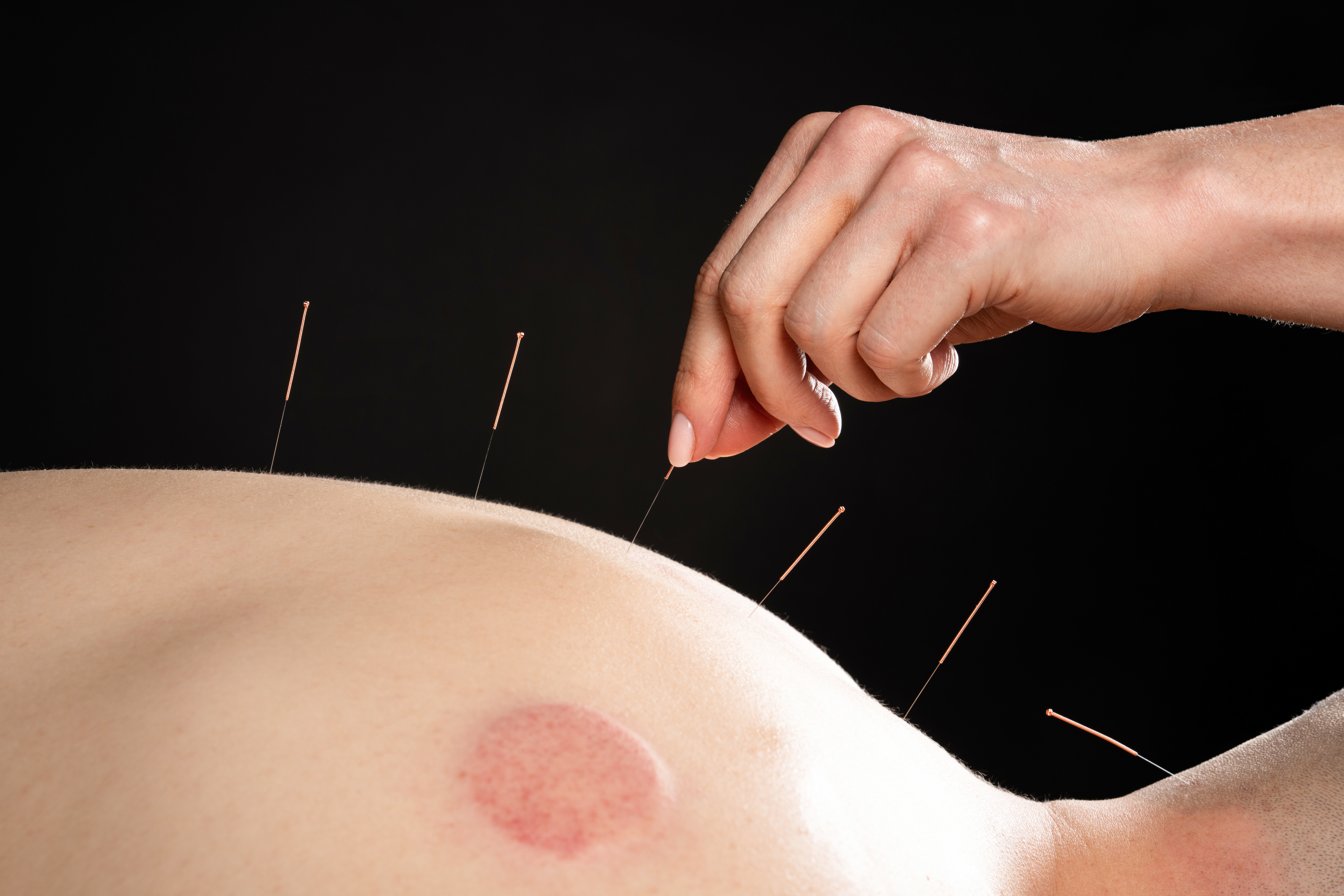Back Pain
Back pain can affect anyone at any age and most people will suffer from it at some point in their lives. It is the UK’s leading cause of disability and one of the main reasons for work-related sickness absence. The condition affects more than 1.1 million people in the UK, with 95% of patients suffering from problems affecting the lower back. Back pain currently costs the NHS and community care services more than £1 billion each year (1). Most lower back pain is caused not by serious damage or disease, but by sprains, muscle strains, minor injuries, or a pinched or irritated nerve. It can also occur during pregnancy, or because of stress, viral infection or a kidney infection.

Your treatment plan
After a thorough medical history and examination procedure treatment needs to address the underlying causes and any exacerbating factors.
Acupuncture
Acupuncture is widely accepted as an effective treatment for back pain. From acute sprains to long-term chronic back pain, it can be a safe and natural way to treat pain and prevent recurrence. Certain acupuncture points have been shown to affect areas of the brain that are known to reduce sensitivity to pain and stress, as well as promoting relaxation and deactivating the ‘analytical’ brain, which is responsible for anxiety (2).
Acupuncture may help relieve chronic pain by:
- Stimulating nerves located in muscles and other tissues, which leads to release of endorphins and other neurohumoral factors (e.g. neuropeptide Y, serotonin), and changes the processing of pain in the brain and spinal cord (3-7).
- Reducing inflammation, by promoting release of vascular and immunomodulatory factors (8, 9)
- Improving muscle stiffness and joint mobility by increasing local microcirculation which aids dispersal of swelling (10).
- Reducing the use of medication for back complaints (11).
- Providing a more cost-effective treatment over a longer period of time (12,13).
- Improving the outcome when added to conventional treatments such as rehabilitation exercises (14,15).
A combination of bodywork such as tui na, acupressure, massage, reflexology, relaxation, breathing and mindful awareness exercises are also a core strategy that has proven helpful for many people.
Other Lifestyle factors - Creating restful sleep patterns, making sure you have the right diet, nutrients and nourishing eating habits are also key, as well as addressing any emotional issues that may be involved.
British Acupuncture Research Fact Sheets - For further information please take a look at the related issues section on the right hand-side of the screen.
- National Institute for Health Research, Health Technology Assessment Spotlight: Acupuncture for back pain. www.ncchta.org/publicationspdfs/Spotlight/AcupunctureSMLFL.pdf
- Wu MT et al. Central nervous pathway for acupuncture stimulation: localization of processing with functional MR imaging of the brain-- preliminary experience. Radiology 1999; 212: 133-41.
- Pomeranz B. Scientific basis of acupuncture. In: Stux G, Pomeranz B, eds. Acupuncture Textbook and Atlas. Heidelberg: Springer-Verlag; 1987: 1-18.
- Han JS. Acupuncture and endorphins. Neurosci Lett 2004; 361: 258-61.
- Zhao ZQ. Neural mechanism underlying acupuncture analgesia. Prog Neurobiol 2008; 85: 355-75.
- Zhou Q et al. The effect of electro- acupuncture on the imbalance between monoamine neurotransmitters and GABA in the CNS of rats with chronic emotional stress-induced anxiety. Int J Clin Acupunct 2008 ;17: 79-84.
- Lee B et al. Effects of acupuncture on chronic corticosterone-induced depression-like behavior and expression of neuropeptide Y in the rats. Neuroscience Letters 2009; 453: 151-6.
- Kavoussi B, Ross BE. The neuroimmune basis of anti- inflammatory acupuncture. Integr Cancer Ther 2007; 6: 251-7.
- Zijlstra FJ et al. Anti-inflammatory actions of acupuncture. Mediators Inflamm 2003; 12: 59-69.
- Komori M et al. Microcirculatory responses to acupuncture stimulation and phototherapy. Anesth Analg 2009; 108: 635-40.
- Thomas KJ, MacPherson H, Thorpe L, Brazier J et al. Randomised controlled trial of a short course of traditional acupuncture compared with usual care for persistent non- specific low back pain. BMJ. 2006 Sep 23;333(7569):623.
- Ratcliffe J, Thomas KJ, MacPherson H, Brazier J. A randomised controlled trial of acupuncture care for persistent low back pain: cost effectiveness analysis, BMJ. 2006 Sep 23;333(7569):626.
- Witt CM, Jena S, Selim D, Brinkhaus B et al. Pragmatic randomized trial evaluating the clinical and economic effectiveness of acupuncture for chronic low back pain. Am J Epidemiol. 2006 Sep 1;164(5):487-96
- Ammendolia C, Furlan AD, Imanura M, Irvin E, van Tulder M. Evidence- informed management of chronic low back pain with needle acupuncture. Spine J. 2008 Jan- Feb;8(1):160-72.
- Yuan J, Purepong N, Kerr DP, Park J et al. Effectiveness of acupuncture for low back pain: a systematic review. Spine. 2008 Nov 1;33(23):E887-900.
